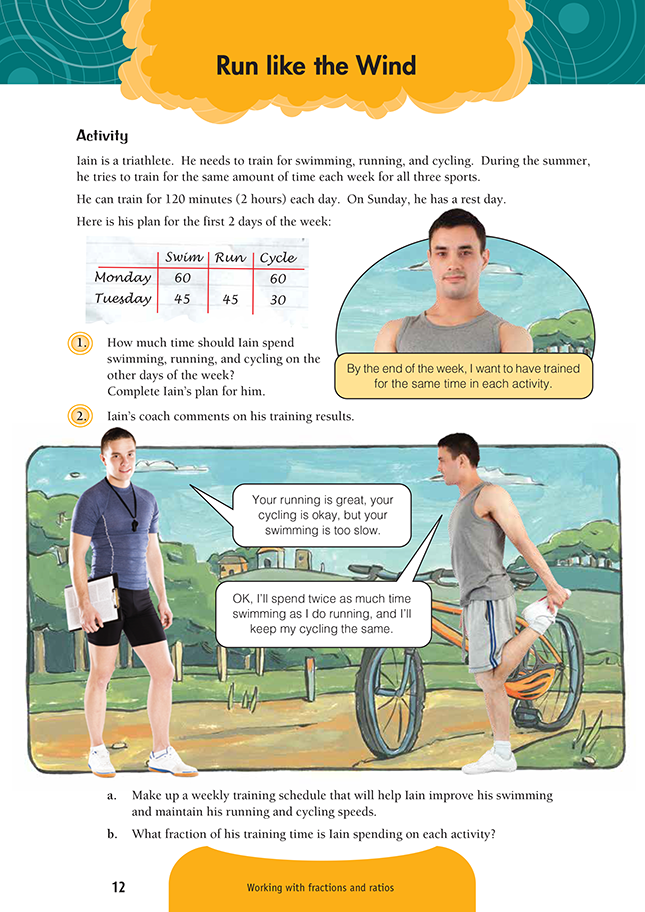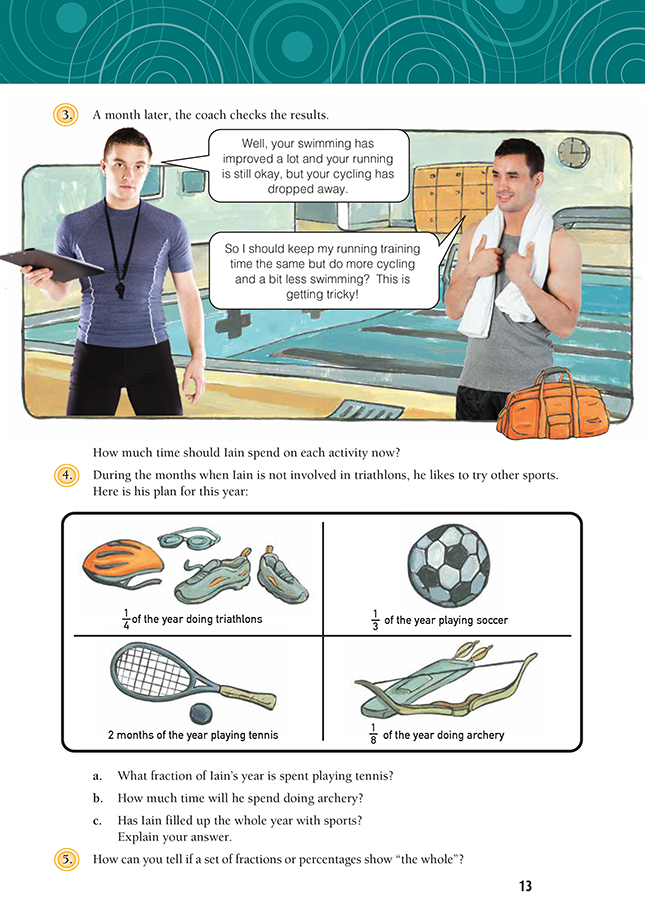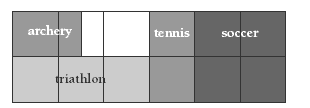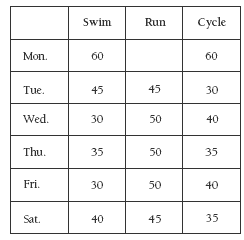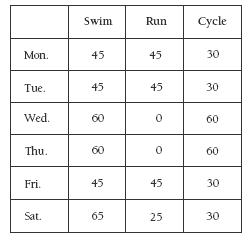This is a level 4 number activity from the Figure It Out series. It relates to Stage 7 of the Number Framework.
A PDF of the student activity is included.
Click on the image to enlarge it. Click again to close. Download PDF (718 KB)
solve problems involving simple proportions
Number Framework Links
Use this activity to:
• help the students to apply advanced additive part–whole strategies (stage 6) in the operational domains of addition and subtraction and proportions and ratios
• help the students to apply advanced multiplicative part–whole strategies (stage 7) when solving problems involving fractions.
FIO, Level 3, Number Sense and Algebraic Thinking, Book One, Run like the Wind, pages 12-13
In this activity, students apply their strategies in whole-number addition and identify fractions of sets that make up training schedules for a triathlete. They need to be able to use a range of addition strategies (stage 6) and also be able to describe parts of a group in fractional terms, for example, to say that 160 minutes out of 720 is 2/9 (stage 7). This requires them to see common factors in the numbers, for example, 160 and 220 have common factors of 2, 5, 10, and so on.
If possible, set the scene and motivate a guided teaching group by inviting a triathlete to talk about their training schedule.
If the students need support to fill in the table in question 1, encourage them to work systematically by asking think-pair-share questions such as:
If you add the numbers across the table on each day, what will they add up to?
How many hours will Iain train for in each week? How many minutes is this?
Iain wants to train for the same amount of time in each activity by the end of the week. How much time should he spend swimming each week?
How could this information help you with your table?
Supportive questions for question 2 could include:
Before his new coach stepped in, Iain was training for the same amount of time in each activity. What fraction did he spend doing each activity? (1/3)
Iain kept his cycling time the same (240 minutes). How many minutes are left for the other two sports each week? (480 minutes)
How could Iain divide up his 480 minutes so that he spends twice as much time swimming as running?
(Strategies could include: “I guessed and checked, for example, 100 + 200 = 300, 150 + 300 = 450, 160 + 320 = 480.” “I worked out that of 480 = 160 minutes for running and so of 480 = 320 minutes for swimming because 2/3 is twice as much as 1/3.”)
Have the students explore question 2b in small groups and then share their strategies and answers with the whole group. Some students might solve the problem by working out what fraction of the whole 720 minutes each sport is allocated, for example, 160 minutes running out of a total of 720 minutes is 2/9.
If students need support, ask them to look at all the numbers involved: 160, 240, 320, and 720. Ask:
What’s the biggest number you can find that will divide into each of these numbers without any remainders? (80)
What fraction of 720 is 80? (1/9)
How can you use this information to help you answer question 2b?
When doing question 4, some students may like to draw or make a diagram. If they need support, suggest that they make a rectangle of 12 squares, where one square represents each month.
Answers to Activity
1. Plans will vary. Iain has 6 x 120 min = 720 min available for training each week. That’s 720 ÷ 3 = 240 min for each part of the event. By the end of Tuesday, he has spent a total of 60 + 45 = 105 min swimming, 45 min running, and 90 min cycling.
For the other 4 days (Sunday is a rest day), he must spend 240 – 105 = 135 min swimming, 240 – 45 = 195 min running, and 150 min cycling.
One possible plan is:
On your plan, check that the numbers across each row for each day add up to 120 min, which is how much time Iain spends training each day (except Sunday), and that the numbers down each column add up to 240 min, which is how much time he trains in each sport each week.
2. a. Many different schedules are possible.
Here is one:
If Iain trains for 720 min in total each week and he keeps the cycling the same as before (240 min), he will need to spend 320 min swimming and 160 min running (because 320 is double 160).
On your plan, check that the numbers across each row for each day add up to 120 min, which is how much time Iain spends training each day (except Sunday), and that the swimming column adds up to 320 min, the running column adds up to 160 min, and the cycling column adds up to 240 min.
b. Iain is spending 4/9 of his time swimming, 2/9 of his time running, and 1/3 or 3/9 of his time cycling.
3. Answers will vary, but here is one possible division of Iain’s total training time:
4. a. 2/12 or 1/6
b. Just over 6 wks (1 mths)
c. No. 1/4 of a yr = 3 mths, 1/3of a yr = 4 mths, 1/8 of a yr = 1 1/2 mths.
3 + 4 + 1 1/2 + 2 (tennis) = 10 1/2, which is 1 1/2 mths short of a yr.
5. If they are fractions, add them. They will add up to 1 or to an equivalent fraction such as 5/5, 10/10 or 12/12. If they are percentages, they will all add up to 100 percent. (You could use a fraction kit and see if all the fraction pieces will join
together to make a whole pie, or you could shade in a squared diagram and see if all the fractions and percentages fill up the whole box.)
